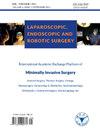Recent patterns in minimally invasive colectomies: Where are we now?
Q3 Medicine
引用次数: 0
Abstract
Objective
Minimally invasive surgery (MIS) techniques such as laparoscopy and robotic surgery for colorectal resection have been cited as superior to traditional open surgery because of their associations with decreased operating room time, hospital stay length, and postoperative morbidity. Despite these benefits, the open approach remains a common surgical method for colorectal resection procedures. We aim to evaluate the most recent yearly trends in open, laparoscopic, and robotic approaches to provide insight into uptake and present the status of MIS in the field of colorectal surgery.
Methods
Data were collected from the American College of Surgeons National Surgical Quality Improvement Program targeted colectomy database for the years 2014–2020. The surgical approach was classified as either open, laparoscopic, or robotic. Analysis was performed to identify trends in colorectal surgery categorized by year, patient age, American Society of Anesthesiologists (ASA) classification, body mass index (BMI), and emergency status.
Results
There was an overall decline in both open and laparoscopic surgery cases (from 38.4% to 34.4% and from 57.4% to 50.8%, respectively) and an overall increase in robotic surgery cases (from 4.2% to 14.8%) from 2014 through 2020. Open surgery was the most common approach for the lowest BMI category (<18.5 kg/m2), highest risk ASA classes (4–5) and most emergent surgeries, whereas robotic surgery rates were negligible for these groups. Laparoscopy was the most prevalent approach for all other categories.
Conclusion
Laparoscopy was the most prevalent approach in colorectal surgery, although the total case proportions generally tended to decrease. While open surgery remains the approach of choice for emergent procedures, laparoscopic case proportions increased marginally in this category, likely owing to increases in surgeon comfort and continued expansion of laparoscopic training efforts. Importantly, the total prevalence of robotic surgery increased significantly between 2014 and 2020, which may be attributable to advancements in the robotic platform and increases in familiarity and competence with the technology. We anticipate a continuation of these trends in the future and recommend the creation of a national robotic surgery training standard.
微创结肠切除术的最新模式:我们现在在哪里?
目的微创手术(MIS)技术,如腹腔镜和机器人手术用于结肠直肠切除术已被引用为优于传统的开放手术,因为它们与减少手术室时间、住院时间和术后发病率有关。尽管有这些好处,开放入路仍然是结肠直肠切除术的常用手术方法。我们的目的是评估开放、腹腔镜和机器人方法的最新年度趋势,以深入了解MIS在结直肠手术领域的应用和现状。方法数据收集自2014-2020年美国外科医师学会国家手术质量改进计划定向结肠切除术数据库。手术方式分为开放、腹腔镜或机器人。进行分析以确定按年份、患者年龄、美国麻醉医师协会(ASA)分类、体重指数(BMI)和急诊状态分类的结直肠手术趋势。结果2014 - 2020年,开放手术和腹腔镜手术病例总体下降(分别从38.4%下降到34.4%和57.4%下降到50.8%),机器人手术病例总体上升(从4.2%上升到14.8%)。对于最低BMI类别(18.5 kg/m2)、最高风险ASA类别(4-5)和大多数紧急手术,开放手术是最常见的方法,而机器人手术在这些组中的发生率可以忽略不计。腹腔镜是所有其他类别中最普遍的方法。结论腹腔镜是结直肠手术中最常见的手术方式,但总病例比例普遍呈下降趋势。虽然开放手术仍然是紧急手术的首选方法,但腹腔镜病例比例在这一类别中略有增加,可能是由于外科医生舒适度的提高和腹腔镜培训工作的持续扩大。重要的是,机器人手术的总患病率在2014年至2020年间显著增加,这可能归因于机器人平台的进步以及对技术的熟悉和能力的增加。我们预计这些趋势将在未来继续,并建议制定国家机器人手术培训标准。
本文章由计算机程序翻译,如有差异,请以英文原文为准。
求助全文
约1分钟内获得全文
求助全文
来源期刊

Laparoscopic Endoscopic and Robotic Surgery
minimally invasive surgery-
CiteScore
1.40
自引率
0.00%
发文量
32
期刊介绍:
Laparoscopic, Endoscopic and Robotic Surgery aims to provide an academic exchange platform for minimally invasive surgery at an international level. We seek out and publish the excellent original articles, reviews and editorials as well as exciting new techniques to promote the academic development.
Topics of interests include, but are not limited to:
▪ Minimally invasive clinical research mainly in General Surgery, Thoracic Surgery, Urology, Neurosurgery, Gynecology & Obstetrics, Gastroenterology, Orthopedics, Colorectal Surgery, Otolaryngology, etc.;
▪ Basic research in minimally invasive surgery;
▪ Research of techniques and equipments in minimally invasive surgery, and application of laparoscopy, endoscopy, robot and medical imaging;
▪ Development of medical education in minimally invasive surgery.
 求助内容:
求助内容: 应助结果提醒方式:
应助结果提醒方式:


